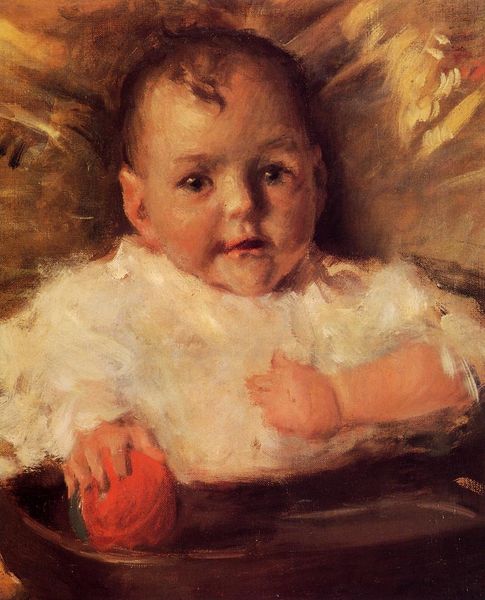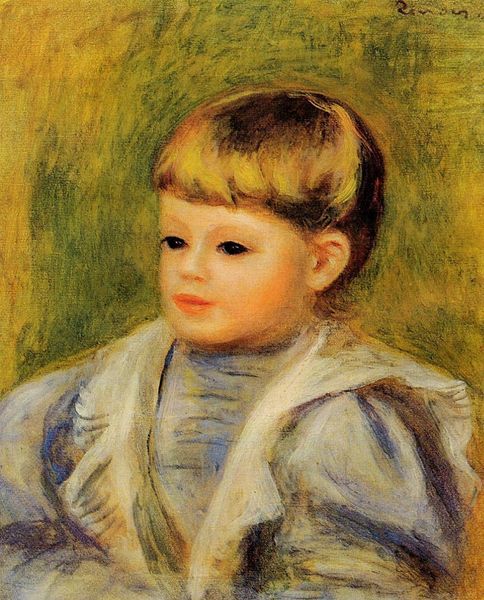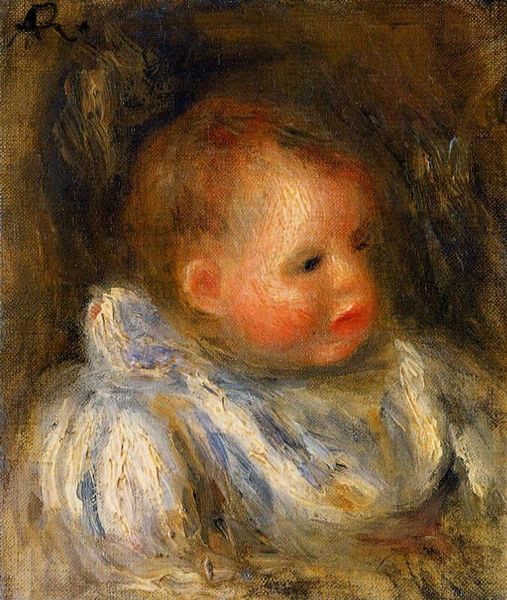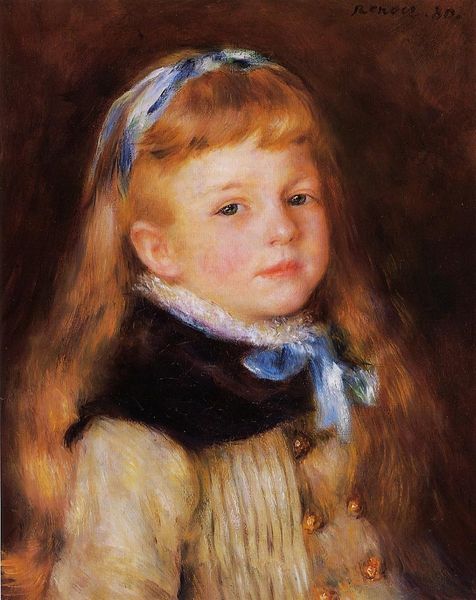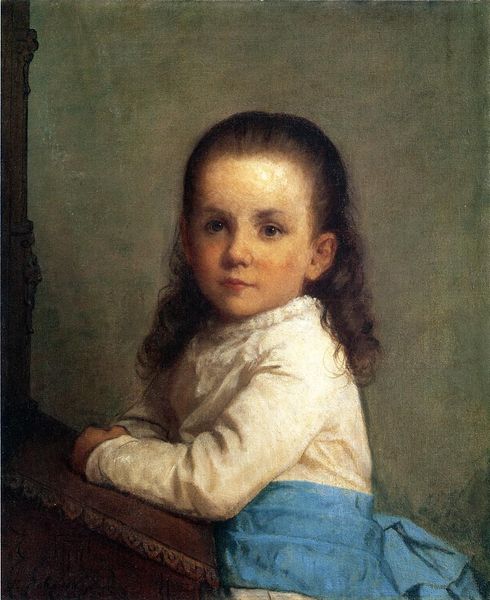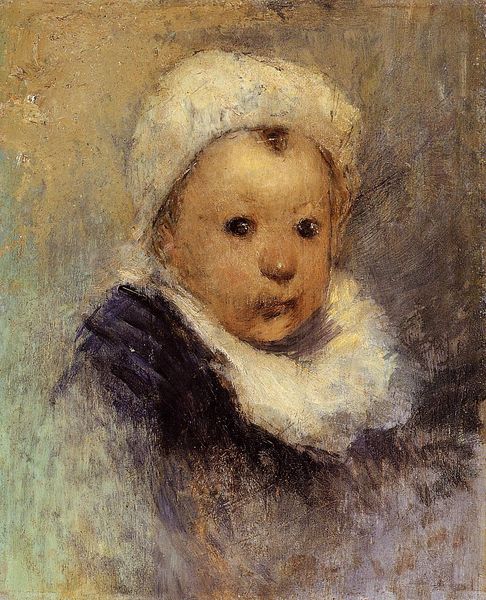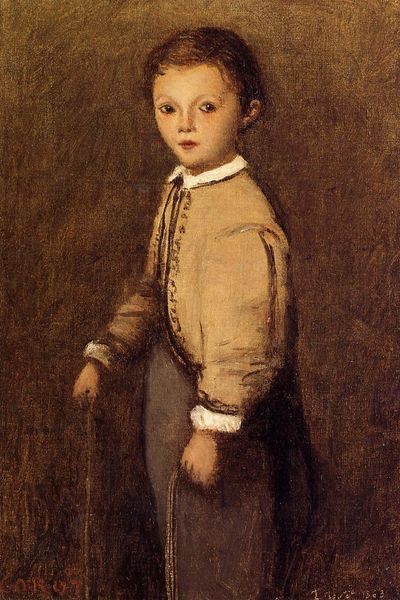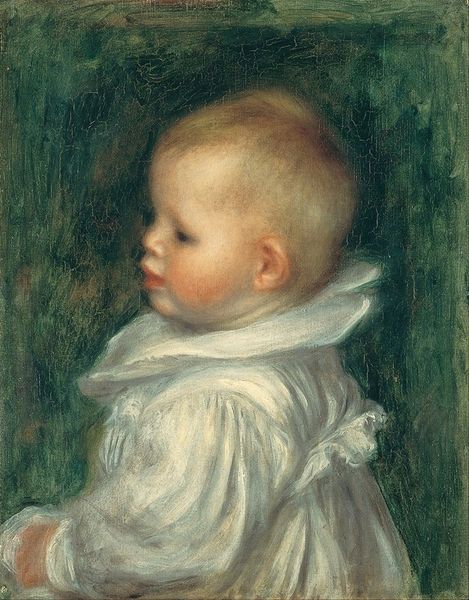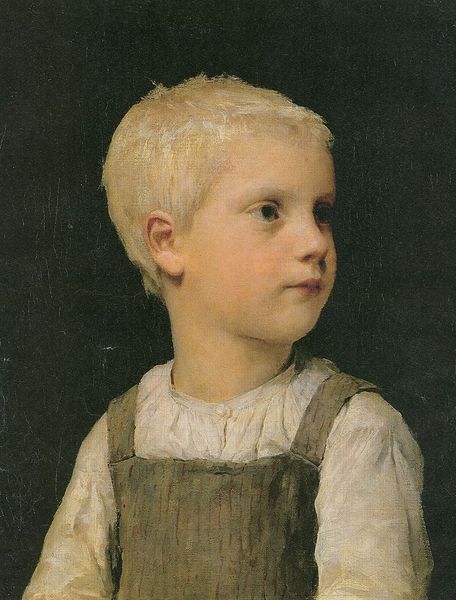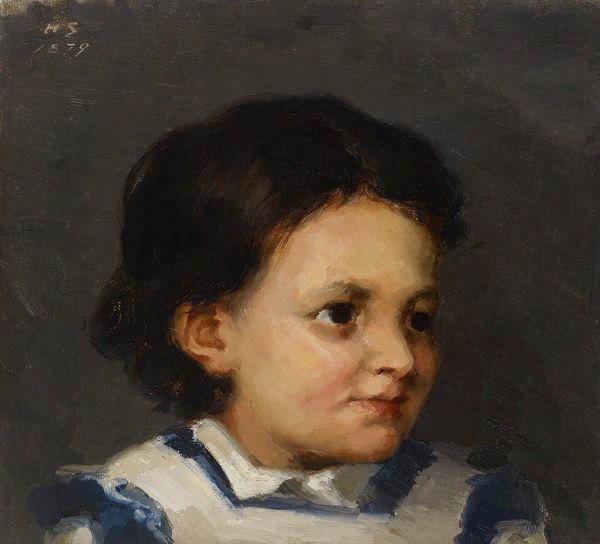
painting, impasto
#
portrait
#
head
#
face
#
painting
#
impasto
#
male portrait
#
portrait reference
#
child
#
portrait head and shoulder
#
animal portrait
#
animal drawing portrait
#
nose
#
portrait drawing
#
facial portrait
#
academic-art
#
forehead
#
portrait art
#
fine art portrait
#
realism
#
digital portrait
Copyright: Public domain
Curator: Welcome. Before us hangs Lawrence Alma-Tadema's 1889 portrait, "Master John Parsons Millet." It's an intimate glimpse, currently held in a private collection. Editor: Immediately, the directness of that gaze hits you. There's something almost unnerving about a baby looking at you with such focused intensity. Curator: Indeed. Alma-Tadema, celebrated for his portrayals of opulent scenes from antiquity, here shifts focus. The brushwork seems less concerned with meticulous detail, gravitating towards a softer, more emotionally resonant representation. We can interpret this shift through his relationship to Millet's father, the American artist Francis Davis Millet, for whom he produced this intimate painting. Editor: The setting's simple; that neutral, dark background focuses us entirely on the child's face, really heightening that feeling of vulnerability but also an implicit privilege conferred by such attention and loving, pictorial craft. I wonder how Alma-Tadema conceived the portrait's function, not just as art, but also to speak to class, masculinity and race. Curator: It’s painted with broad strokes. Look closely, you can see that the handling of the paint contributes significantly to the overall effect. The loose impasto, especially around the face and shoulders, suggests spontaneity, warmth—diverging from his better-known academic precision. Editor: Right. Think about the Victorian era's complex relationship with childhood— simultaneously idealized and often exploited through labor, think the visibility of child chimney sweeps and flower girls. Does this painting participate in an exercise that freezes its young subject within a sanitized, palatable representation of infancy or not? Curator: That is precisely where the power dynamics and privilege play out! Through displays of sentimental virtue or demonstrations of status via idealized commissioned portraits like this. The child's direct gaze challenges the viewer in many respects, but that gaze has a socially sanctioned place as a commissioned portrait in a private collection. It underscores the role of art as both a reflection and a constructor of social identity, don't you agree? Editor: Absolutely. Ultimately, "Master John Parsons Millet" gives us so much more than just the face of a child—it mirrors Victorian ideals and art's active function within that world. Curator: Precisely, and that tension enriches our understanding today.
Comments
No comments
Be the first to comment and join the conversation on the ultimate creative platform.

